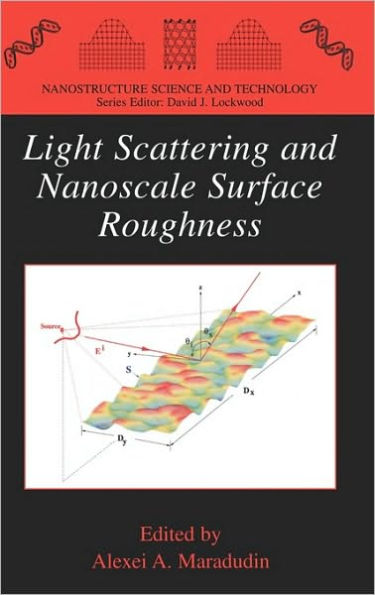Light Scattering and Nanoscale Surface Roughness
All real surfaces, both those occurring naturally, and those fabricated artificially and with great care, are rough to some degree. It is therefore of interest, and often of importance, to know the extent to which this roughness affects physical processes occurring at a surface. A particularly interesting class of physical processes occurring at a rough surface is the scattering of electromagnetic waves from it, or their transmission through it. In this case the degree of the surface roughness is referred to the wavelength of the waves incident on it. The study of the scattering of electromagnetic waves from rough surfaces has been actively carried out for more than a century now, since Rayleigh's inves- gations of the scattering of a monochromatic plane wave incident normally on a 1 sinusoidal interface between two different media. The first theoretical treatment of the scattering of an electromagnetic wave from a randomly rough surface was due to Mandel'shtam/ in the context of the scattering of light from a liquid s- face. In these pioneering studies the angular dependence of the intensity of the scattered field was calculated by perturbation theory as an expansion in powers of the surface profile function though the first nonzero term, a single scattering approximation.
1101007761
Light Scattering and Nanoscale Surface Roughness
All real surfaces, both those occurring naturally, and those fabricated artificially and with great care, are rough to some degree. It is therefore of interest, and often of importance, to know the extent to which this roughness affects physical processes occurring at a surface. A particularly interesting class of physical processes occurring at a rough surface is the scattering of electromagnetic waves from it, or their transmission through it. In this case the degree of the surface roughness is referred to the wavelength of the waves incident on it. The study of the scattering of electromagnetic waves from rough surfaces has been actively carried out for more than a century now, since Rayleigh's inves- gations of the scattering of a monochromatic plane wave incident normally on a 1 sinusoidal interface between two different media. The first theoretical treatment of the scattering of an electromagnetic wave from a randomly rough surface was due to Mandel'shtam/ in the context of the scattering of light from a liquid s- face. In these pioneering studies the angular dependence of the intensity of the scattered field was calculated by perturbation theory as an expansion in powers of the surface profile function though the first nonzero term, a single scattering approximation.
54.99
In Stock
5
1

Light Scattering and Nanoscale Surface Roughness
496
Light Scattering and Nanoscale Surface Roughness
496
54.99
In Stock

Product Details
| ISBN-13: | 9780387255804 |
|---|---|
| Publisher: | Springer US |
| Publication date: | 01/08/2007 |
| Series: | Nanostructure Science and Technology |
| Edition description: | 2007 |
| Pages: | 496 |
| Product dimensions: | 6.10(w) x 9.17(h) x 0.04(d) |
From the B&N Reads Blog
